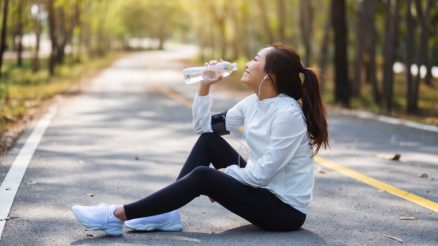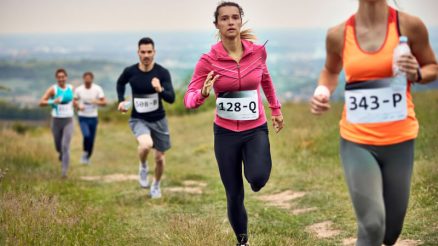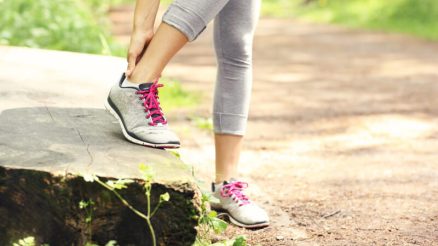Running is one of the most rewarding forms of exercise, but even the most seasoned runners can fall victim to one of the sport’s most common nuisances: blisters. These small fluid-filled pockets can form due to friction, heat, and moisture, turning a great run into a painful ordeal. Fortunately, with the right knowledge and precautions, blisters can be largely prevented and effectively treated when they do occur.
What Causes Blisters When Running?
Blisters typically form when there is repeated rubbing between your skin and another surface, usually your sock or shoe. This friction damages the upper layers of the skin, causing fluid to collect underneath and form a blister. Common contributing factors include:
- Ill-fitting shoes: Shoes that are too tight can compress toes and create pressure points, while shoes that are too loose allow excessive movement that leads to friction and rubbing. Pay close attention to the fit around the heel, arch, and toe box.
- Moisture: Accumulated sweat or exposure to rain can lead to soggy socks, which soften the skin and weaken its outer layers, making it more prone to blistering. Moist environments also increase the risk of fungal infections.
- Heat: Continuous running generates heat due to friction and physical exertion, particularly around pressure points such as the ball of the foot and heel. This heat can exacerbate skin irritation and contribute to blister formation.
- Sock choice: Cotton socks absorb and hold onto moisture, increasing skin friction as they become wet. In contrast, technical running socks made from synthetic fibers like polyester or nylon, or natural fibers like merino wool, wick moisture away and help keep the feet dry and cool, reducing the likelihood of blisters.
How to Prevent Blisters
Preventing blisters comes down to reducing friction, managing moisture, and ensuring a good fit. Here are several proven strategies:
- Choose Proper Footwear
- Get professionally fitted for running shoes at a reputable running store, where staff can assess your gait and recommend the best shoe type based on your foot structure and stride.
- Ensure there is enough room in the toe box to wiggle your toes and prevent nails from hitting the front. A thumb’s width of space between your longest toe and the shoe end is a good benchmark.
- Check the heel fit—your heel should feel secure without slipping.
- Replace running shoes every 300–500 miles, or sooner if the soles are worn down or the cushioning feels less supportive.
- Wear the Right Socks
- Opt for moisture-wicking socks made from synthetic fibers such as polyester, nylon, or spandex blends, or from natural materials like merino wool, which offers both moisture management and temperature regulation.
- Avoid cotton socks, which trap sweat and increase friction, raising the risk of blisters.
- Consider double-layer socks or blister-specific designs that reduce shear forces by allowing the layers to slide against each other rather than your skin.
- Use Lubricants or Powders
- Apply anti-chafe balms, petroleum jelly, or specialized foot lubricants like Body Glide to known hotspots, such as the arches, heels, or toes, before running.
- Use talcum or antifungal foot powders inside socks or shoes to absorb sweat and reduce the chance of skin maceration.
- Try Taping or Blister Patches
- Use blister prevention tape, kinesiology tape, or hydrocolloid patches on areas prone to rubbing, such as the back of the heel or ball of the foot.
- Moleskin can be cut to shape and used to create a barrier or donut-like padding to offload pressure from vulnerable spots.
- For long-distance runners, combining tape with a layer of lubricant can offer dual protection.
- Break in New Shoes Gradually
- Don’t go for a long run in brand-new shoes, no matter how well they fit. Begin with short walks or easy runs.
- Allow time for the shoe materials to soften and mold to the shape of your feet over a few sessions.
- Monitor any emerging hotspots during initial wears and use protective taping if needed.
- Keep Your Feet Dry
- Change socks immediately after a run or during long runs if they become damp from sweat or rain.
- Use breathable shoes with mesh uppers that allow air flow and help manage internal foot temperature and moisture.
- Consider foot antiperspirants or alcohol-based drying sprays if you have excessively sweaty feet.
How to Treat Blisters
Even with precautions, blisters can sometimes still occur. Here’s how to handle them safely:
- Leave Small Blisters Intact
- If the blister isn’t painful, avoid popping it. The skin acts as a natural barrier against infection, so it’s best to leave the blister intact whenever possible.
- Clean the surrounding area gently with mild soap and water.
- Cover the blister with a sterile, non-adhesive bandage or blister pad to protect it from further friction.
- Consider using a cushioned pad with a center cut-out to shield the blister from pressure without directly covering it.
- Drain Larger, Painful Blisters Safely
- If a blister is large, painful, or likely to burst on its own, it may be safer to drain it in a controlled, hygienic manner.
- Begin by washing your hands and the blister area thoroughly with soap and warm water.
- Sterilize a needle with rubbing alcohol or by holding it over a flame and allowing it to cool.
- Gently puncture the edge of the blister in one or two places, allowing the fluid to drain out.
- Avoid removing the skin over the blister, as it serves as a protective layer.
- Apply an antibiotic ointment (like Neosporin or Bacitracin) to prevent infection.
- Cover the area with a sterile adhesive bandage or hydrocolloid blister pad, and change the dressing daily or if it becomes wet.
- Watch for Signs of Infection
- Check the blister daily for signs of infection such as increased redness, warmth, swelling, pus, or red streaks extending from the area.
- If the blister becomes increasingly painful, leaks cloudy fluid, or you develop a fever, seek medical attention promptly.
- Infected blisters should not be ignored, as they can develop into cellulitis or other complications if untreated.
- Rest and Protect the Area
- Try to keep pressure off the blistered area by limiting walking or running until it heals.
- Use cushioned dressings, blister bandages, or donut-shaped foam pads to redistribute pressure away from the blister.
- For blisters on the heel or ball of the foot, consider using gel inserts or orthotic pads inside your shoes.
- Keep It Clean and Dry
- Change bandages at least once a day or more often if they become moist or soiled.
- After removing the bandage, allow the blister to air out for short periods, especially during rest.
- Avoid soaking the blister in water for prolonged periods, as this can soften the skin and slow healing.
Final Thoughts
Blisters are a common issue among runners, but they don’t have to derail your training. With proper footwear, moisture management, and proactive care, you can dramatically reduce your risk. And if blisters do occur, early and proper treatment can speed up recovery and prevent complications. Prioritize foot care as part of your running routine to keep each stride comfortable and injury-free.








